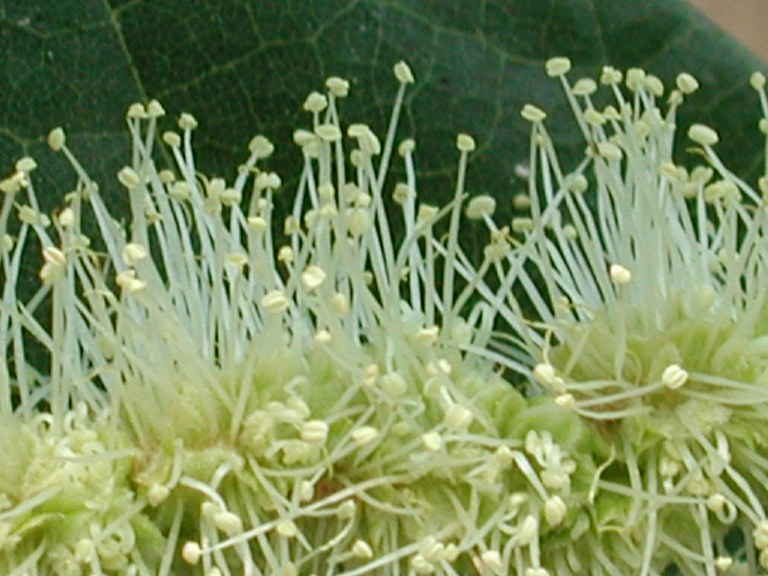Information on collecting, drying, and analyzing pollen from chestnut catkins.
Instructions for Drying Pollen
Watch this Video on Chestnut pollen Removal
and
This document on collecting, drying, and storing chestnut anthers by Dr. Paul Sisco
To collect the pollen, the team pulls the catkins off of the stems, to create a pile of catkins. A team member will take a few catkins and rub them around a metal window screen wrapped over a rack, with glass underneath. This is done until the catkin is bare of anthers. The screen is removed the pile underneath is sifted through a number 30 rock sieve. This screen size is the perfect size for anthers. The same effect can be accomplished using a small hand-held cooking sifter, but you must be careful. Sift the pile while watching what is falling through. The yellow anthers will fall first. When the green-colored filaments and other debris start falling through -stop- toss this in the trash, it is very easy to over sift. Surface sterilize with ethanol flame on metal equipment and wipe down the glass. The anthers are places into a pill bottle; no more than 1/3 full, and placed opened (Paul had placed the caps on) in a can of desiccant. Push the pill bottles down into the desiccant to prevent falling and spillage. Close the can and dry overnight in a refrigerator. After 24-48 hours remove the pill bottles and add desiccant capsules to each bottle, cap the bottle, and the pollen is ready for storage in the fridge or freezer.
Freezing and Germination Assay
To freeze pollen, it should be as dry as possible. To achieve this, pollen is stored in medicine bottles and placed in a sealed can full of desiccant for at least 24hrs. Then add a color-changing desiccant stick to the bottle when the lid is placed on. For freezing, the pollen is placed in a standard refrigerator freezer at about 0F. There is not a procedure for thawing, however, thawing should be avoided until ready for use.
The germination rates of the pollen will go down once the pollen has been frozen. One year old gave good germination rates, enough so that it can still be used. Some pollen will still germinate at two years. At three years germination was rare.
Download instructions for performing a germination assay on chestnut pollen
If the pollen is used in the field, the germination rate is dramatically lower. In Meadowview, we keep pollen in cold storage (fridge in the lab, cooler in the field) and take what we need out for pollinations while keeping a stock in the fridge when possible. Used pollen from the field is not worth trying to freeze.
PDF document, 146.1 KB
PDF document, 7.0 KB


